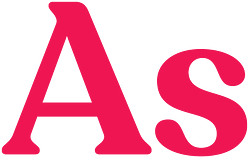 As long as I’ve been teaching, everyone has seemed obsessed with getting rid of bad teachers. A December 2008 cover of Time featured famous education reformer/lightning rod Michelle Rhee wielding a broom, threatening to “sweep” out teachers who didn’t perform. The narrative was reinforced in the 2010 documentary Waiting for Superman. Four years later, Time went back to the well with it “rotten apples” cover. While it’s now an established fact that teachers are the key school-based factor in students’ educational outcomes, the obsession over bad teachers fails to answer how we identify the best teachers, support those who struggle, and remove ineffective ones.
As long as I’ve been teaching, everyone has seemed obsessed with getting rid of bad teachers. A December 2008 cover of Time featured famous education reformer/lightning rod Michelle Rhee wielding a broom, threatening to “sweep” out teachers who didn’t perform. The narrative was reinforced in the 2010 documentary Waiting for Superman. Four years later, Time went back to the well with it “rotten apples” cover. While it’s now an established fact that teachers are the key school-based factor in students’ educational outcomes, the obsession over bad teachers fails to answer how we identify the best teachers, support those who struggle, and remove ineffective ones.
 II’m now in my seventh year of teaching elementary school. Over the course of four years teaching in the Bronx and three in Harlem, I’ve received evaluations based on three different systems. For my first four years of teaching, I was “satisfactory.” The past two years, I earned “effective” ratings based on two different calculations. This year, I’ll receive two different ratings. This is frustrating to say the least.
II’m now in my seventh year of teaching elementary school. Over the course of four years teaching in the Bronx and three in Harlem, I’ve received evaluations based on three different systems. For my first four years of teaching, I was “satisfactory.” The past two years, I earned “effective” ratings based on two different calculations. This year, I’ll receive two different ratings. This is frustrating to say the least.
The primary reason for all this uncertainty is the contentious use of standardized test scores in teacher evaluations. The intention was to use these scores to make evaluations more rigorous and objective, but they’ve been mostly successful at generating rancor, controversy, and litigation. In 2014, three separate lawsuits were filed in New York against the state’s value-added model (VAM).
What VAMs like New York’s attempt to do is apply a complex formula to determine a teacher’s effectiveness by comparing students’ actual growth to the expected growth. Expected growth is calculated through an algorithm that factors in past test scores and demographic data.
Many teachers have resisted the idea that a mathematical process can accurately capture our work. Furthermore, we resent the high stakes attached to this model.
Sheri G. Lederman has taught fourth grade for 19 years in the Great Neck district of Long Island and has become, in some ways, the face of the anti-VAM movement. She is suing the state over the controversial methods in which teachers are evaluated after the student growth portion of her evaluation rated her as ineffective. “It’s dehumanized us,” Lederman said in a February 2015 interview with the Times-Union. “It really takes away my significance in terms of my human interaction with the kids and their parents and it’s turned every one of us into nothing more than a number.”
What really angers me, however, isn’t just the model itself, but the high stakes attached to it. What I want—what all teachers want—is a chance to grow. Most teachers know the areas in which we struggle, but often the professional development we receive is driven by compliance, not by our own needs and interests.
I have an idea: How about we put this important job in the hands of teachers?
Peer assistance and review (PAR) is a system of peer mentorship and evaluation methods used in a small but growing number of school districts across the country. It relies on expert teachers to coach and evaluate novice or struggling teachers. In 2007, presidential candidate Barack Obama cited PAR as a promising way to remove “underperforming” teachers quickly and fairly. When candidate Obama became President Obama, he and Secretary of Education Arne Duncan forgot about PAR and focused on using Race to the Top to push the use of student test scores to strengthen teacher evaluations.
Still, while removing bad teachers is one way to sell PAR to folks like New York Governor Andrew Cuomo who insist there are too many of them in New York classrooms, it’s no way to get teachers invested. Not when we feel like everyone already has an itchy trigger finger to fire us.
In fact, a Center for American Progress study of PAR in seven different districts showed that it helps ineffective teachers improve and stay in the classroom as much as it helps remove bad teachers altogether. In their definitive study on PAR, professors John P. Papay and Susan Moore Johnson stopped short of implying causality between PAR and teacher retention. And yet in every district they studied that reported turnover rates, retention of first-year teachers averaged 90 percent. Even if there wasn’t growing concern about a national teacher shortage, this type of retention would be a game changer, especially for urban districts that struggle to keep teachers in the classroom.
Here are more selling points for PAR:
It aims to give struggling teachers support that’s defined by trust, rather than accountability. In some cases, teachers are referred to PAR based on a poor evaluation, but in other districts, colleagues might refer teachers or they can self-refer. These teachers then receive concentrated support from a consulting teacher, who leaves their own classroom part- or full-time to visit, coach, and evaluate other teachers. After one or two years, most teachers show tremendous progress. If a teacher does not make adequate progress, the PAR panel, composed of teachers and administrators, can dismiss them. This is a key difference from most traditional districts, where removing a teacher, especially one with tenure, can be a very arduous, expensive, and drawn-out process.
The labor-management relationship required for these PAR panels can foster real trust and collaboration, not words that typically characterize relations between teacher unions and city management. Having teachers, administrators, and city leaders come together to create a shared definition of quality teaching stands in stark contrast to our current system. As it stands now, teachers feel like we’re being judged by a definition we don’t agree with, one largely based on student testing. To implement a system where teachers are ultimately accountable to their peers would certainly lead to more buy-in and trust.
PAR makes it possible for first-year teachers to receive mentorship from the consulting teacher. This mentoring for novice teachers would be a powerful shift for many districts. New York already requires mentoring, but in many schools, quality and consistent support is hard to come by. I know all too well from experience that the first year of teaching is the hardest. In too many districts, that first year is “sink or swim.” This approach hasn’t gone well: As many as 50 percent of teachers in urban districts leave within their first five years.
Perhaps most important, PAR offers a chance to professionalize teaching by putting performance evaluations and support in the hands of teachers and creating a career ladder that distinguishes master teachers.
 SSo, with all these benefits, why aren’t more districts using PAR? The most obvious answer is money. PAR is expensive, at least when you look strictly at the added costs of hiring teachers to replace the consulting teachers who have left their classroom. In California and elsewhere, however, districts are looking at PAR as an investment in a larger human resource strategy, where the costs of consulting teachers are allayed by the benefits to retention and overall teacher quality.
SSo, with all these benefits, why aren’t more districts using PAR? The most obvious answer is money. PAR is expensive, at least when you look strictly at the added costs of hiring teachers to replace the consulting teachers who have left their classroom. In California and elsewhere, however, districts are looking at PAR as an investment in a larger human resource strategy, where the costs of consulting teachers are allayed by the benefits to retention and overall teacher quality.
Education Secretary John King (@JohnKingAtED) said that “lifting up the teaching profession and school leadership” are among his top three main priorities this year. PAR could be an ideal vehicle to do just that.
Many teachers choose to spend their whole career in the classroom, but many leave teaching altogether because opportunities for growth or advancement are limited. Rather than using test scores to label teachers like Sheri Lederman ineffective, the Great Neck School District could use PAR to create a pathway for Lederman to showcase her expertise and continue her own professional growth.
The use of standardized test scores and VAM to evaluate teachers reached its peak with assistance from President Obama’s Race to the Top initiative. Undergirding this trend was the belief that “data” would help us better identify good teachers and root out bad ones. As the backlash to standardized testing and performance evaluation systems grows, this may start to change.
The data collected by an expert educator closely watching the teaching and learning in a classroom over an extended period of time should be considered just as reliable and valid as a number generated from a complex algorithm. But to do so would require us to truly trust and invest in teachers. Are we ready to do this?
